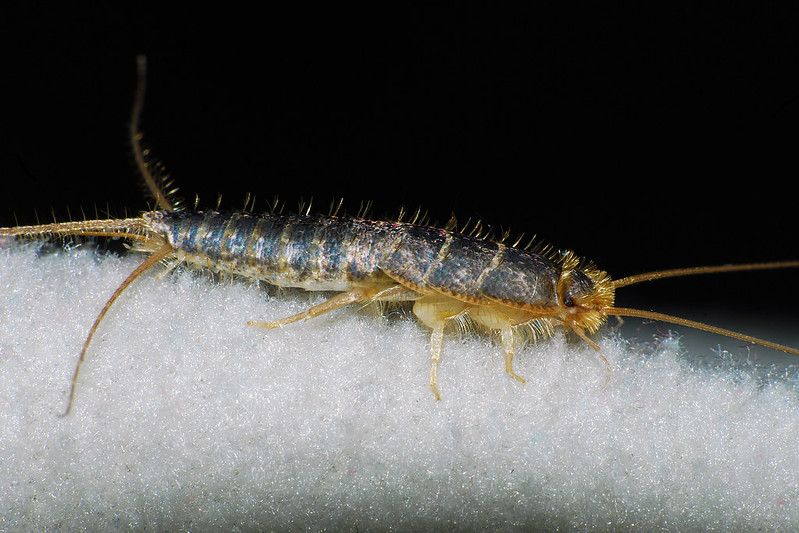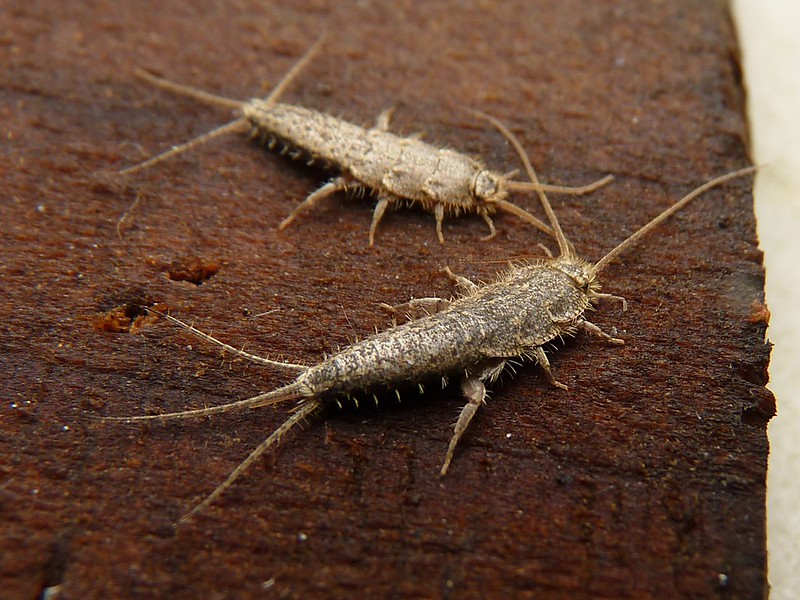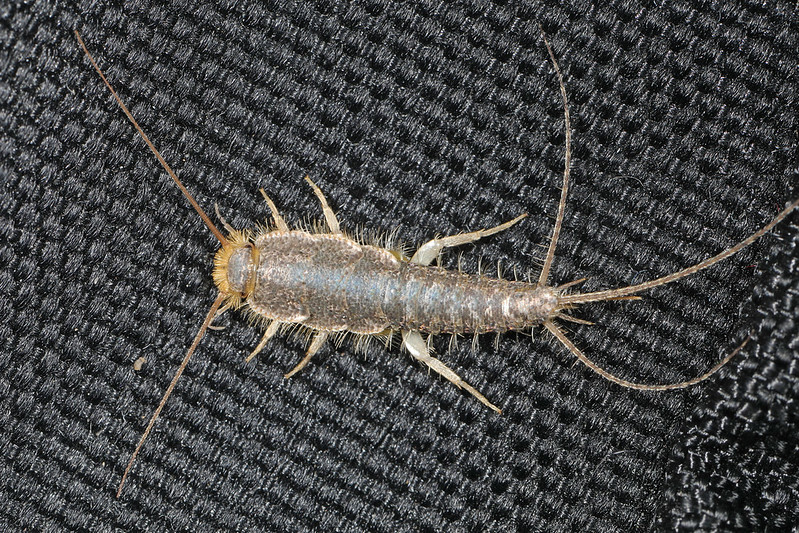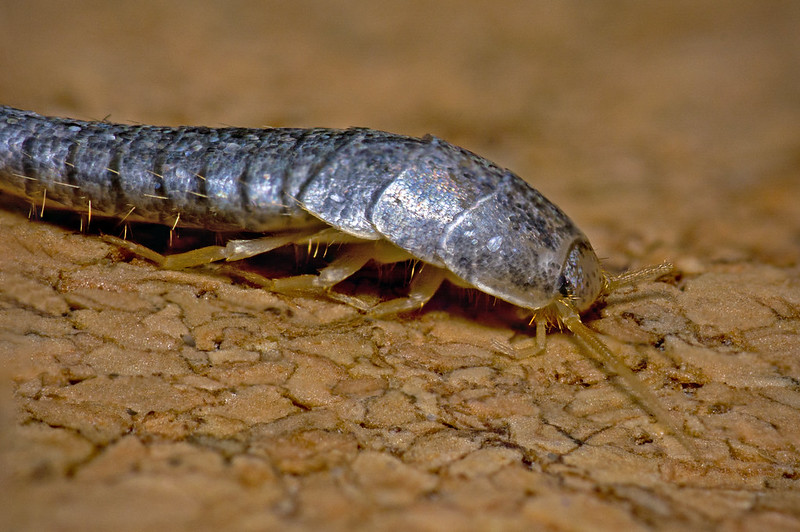With so many possible choices, it’s hard to decide which kind of bug is the creepiest. For this writer Silverfish feature high on the list of candidates. Once they get into your home they’ll find ample food sources, as these insects munch on starches and sugars like those found in wallpaper, food crumbs, pet food, fabrics, books, and other substances found literally in every home. These tough bugs are hard to get rid of, too.
As these speedy bugs slither around your stored winter clothes or you discover them behind a bookshelf, you’ll want to know if they pose any danger.
Do Silverfish Bite or Sting?
The good news is that silverfish do not bite or sting people. These insects, which prefer dark environments and need very high humidity levels of 75 percent and upward to thrive, will mostly live out their lives hidden from the human inhabitants of a house. Unless you have a very serious infestation, you are only ever likely to see them in moist areas like bathrooms (when you turn the light on in the middle of the night) or in the darker corners of cupboards. As you may know from personal experience, silverfish will creep away at great speeds when they notice you.
Silverfish are not known that carry any diseases that pose a threat to humans, either.
Are Silverfish Dangerous to Pets?
Again, the answer is, generally, “no”. Silverfish do not pose a danger to common pets like cats, dogs, or fish, or even to less common pets like birds, ferrets, or snakes.
Do Silverfish Cause Damage to Your Property?
Yes, definitely. Silverfish are nocturnal scavengers who can, over time, cause great damage to valuables that can include various items of clothing, blankets, curtains, and other fabrics, as well as books and papers. As they eat, silverfish leave tiny holes. They can also cause yellowish stains.
Besides eating these valuables, silverfish also feast on some of the same things humans eat — once they get into your pantry, they can render grains and pasta stockpiles unsanitary, leaving holes that may also invite other pests in while they’re at it.
Are Silverfish Bad for Your Garden?
Not generally, as the diet of these insects overwhelmingly consists of dead and decaying plant and related organic matter. They will leave your living plants alone. If you have silverfish in your garden, however, they may also come into your home — and if you have a plant nursery indoors, silverfish present there will also spread to other areas of your property.
Do Silverfish Cause Allergic Reactions? What Else Do You Need to Know?
If the facts that silverfish do not bite or sting people, mostly do their best to stay well out of your way, and do not carry any diseases gave you the impression that they only endanger your property and not your health, you would — unfortunately — be wrong. That is true for two distinct reasons.
The first is the fact that silverfish release allergens, specifically tropomyosin, just like more common household pests like dust mites do. In people who are allergic to silverfish and people with asthma, the presence of silverfish (especially in large numbers) can provoke serious symptoms that include wheezing, coughing, shortness of breath, and skin rashes. In asthmatic people, silverfish can trigger full-blown asthma attacks.
This may not be of immediate concern to you if you are not allergic to silverfish or asthmatic, but beware — prolonged exposure to high concentrations of allergens can cause you to become sensitized over time.
This is one compelling reason to take steps to get rid of silverfish. The other would be that they thrive only in extremely high humidity levels of between 75 and 95 percent. For comparison, the Environmental Protection Agency recommends that you keep the relative humidity in your home between 30 and 50 percent to protect your health.
Having a prolific silverfish infestation in your home indicates that you either have a generalized humidity problem, or localized buildup of moisture — such as from leaky pipes or loose roof shingles. These same conditions invite other pests like dust mites and cockroaches, which likewise emit allergens, in. High humidity levels further pose an extremely high risk of mold, which can be allergenic as well as toxic.
By combating the conditions that allow silverfish to comfortably live in your home, you take powerful steps to create a healthier home environment.
Citations and Credits



